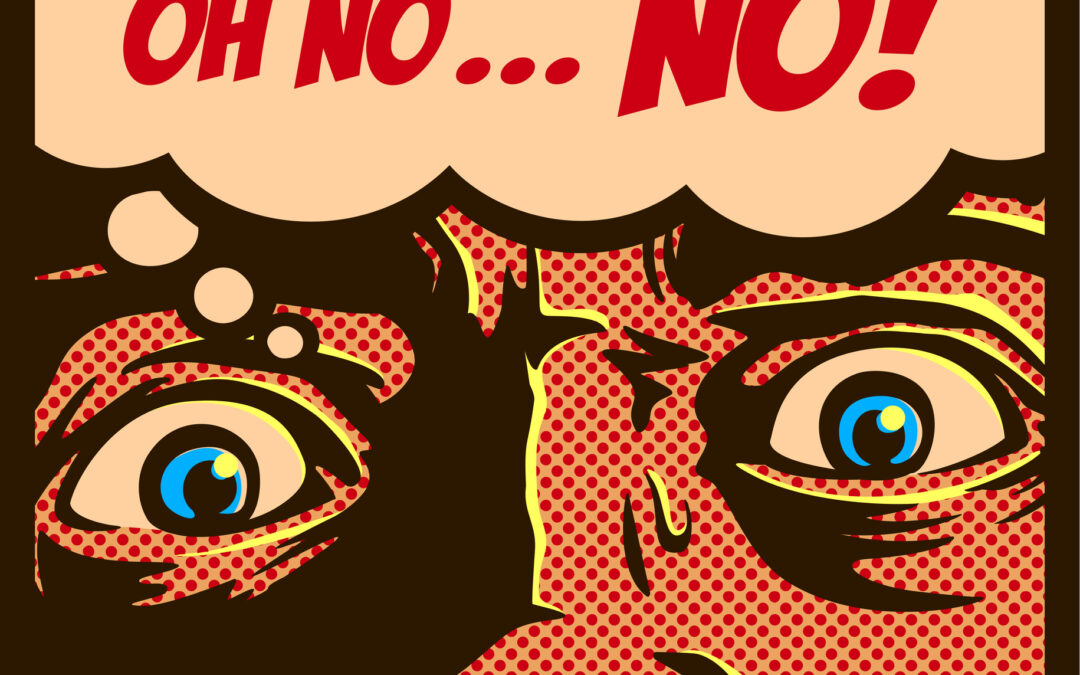Hope, Action, and Climate Advocacy “I thought I couldn’t make a difference because I was too small.” -Greta Thunberg We live in the age of information, which means it is increasingly difficult to limit one’s access to breaking news. More and more we are seeing...

Contamination Fears In a Contaminated World: What’s Appropriate And What’s Compulsive?
Covid, Measles outbreaks, Mokeypox- it can feel overwhelming to manage the constant barrage of new threats. For most people, a significant behavioral change is needed to ensure safety, but for people with OCD or health anxiety, where do you draw the line? What are appropriate safety precautions, and what are compulsive safety-seeking or attempts to manage anxiety? Years ago, it would have been seen as obviously excessive for most people to wear a mask in public spaces, sanitize everything before bringing it into your home, and refuse people in your home, but now that may be exactly what’s needed to remain safe. An added component to this difficulty are the differences in how folks view these threats, complicating factors like having young children or being immunocompromised, and individual tolerance for risk. What might be excessive for one person may be necessary for another.
There is no one right answer to what is an “appropriate” level of safety precaution, again because each person will have a different set of circumstances to consider. The simplest way to explore if your safety precautions are appropriate, or potentially causing you more anxiety/distress, can be boiled down to three questions:
Is this in line with expert recommendations?
The more obvious way to assess your safety precautions is to find experts whose opinions and recommendations you trust. This could be medical doctors, scientists, government agencies, or ideally, a combination of several so you can ensure your information is reliable. For example, both the CDC and the Mayo Clinic advise washing your hands with soap and water for at least 20 seconds or, if that is not available, using hand sanitizer with at least 60% alcohol content. With this in mind, some folks may prefer to go a little beyond these recommendations, but it gives a good barometer for what is considered adequate for safety.
Is this safety precaution causing you harm in an effort to keep you safe?
This is truly the most important assessment. If washing your hands for 60 seconds feels more comfortable, there’s likely little harm and it could be appropriate to continue. However, if you begin using scalding water, harmful chemicals like bleach, or begin to experience peeling, cracking, or bleeding, it warrants an assessment of whether the safety precaution is appropriate.
Is this causing me to be unable to engage in necessary or preferred activities?
This is a slightly more challenging assessment because nearly everyone has experienced a decrease in their ability to engage in preferred tasks, or are having to engage in them in different ways than we used to. You might have to say no to a large gathering, or only meet with friends outside and masked when you would prefer not to. If you find yourself isolating, or feeling unable to engage in activities even when risk could be mitigated, it might warrant a closer look. Another major component to this question is how much time is being spent on the safety precaution. For example, there’s a major difference between a quick wipe-down on the groceries, and a 5 hour sanitizing deep clean. If you find yourself spending considerable time on safety precautions that you would normally spend on leisure activities, it may be worth exploring.
If you are noticing that your attempts to maintain safety are starting to become detrimental in other ways, please reach out, a trained therapist can help you find a balance between safety and anxiety that opens the door to joy and hope.
For more information, go to https://iocdf.org/expert-opinions/expert-opinion-contamination/

Climate Anxiety

Get Outside For Your Brain
When I am among the trees, Especially the willows and the honey locust, Equally the beech, the oaks and the pines, They give off such hints of gladness I would almost say they save me, and daily. Excerpt, "When I Am Among The Trees" by Mary Oliver We live in a world...

Contamination Fears In a Contaminated World: What’s Appropriate And What’s Compulsive?
Covid, Measles outbreaks, Mokeypox- it can feel overwhelming to manage the constant barrage of new threats. For most people, a significant behavioral change is needed to ensure safety, but for people with OCD or health anxiety, where do you draw the line? What are...

3 Unconventional Ways to Stop a Panic Attack
Panic attacks feel different for everyone, but typically include sensations like a pounding heart, sweating, a feeling of terror, constricted or rapid breathing, and feeling as though the room is closing in on you or spinning. Regardless of how they present, a...

Deep Breathing: Why Do It?
If you have ever felt frustrated by being told to just "take a deep breath" when you are feeling angry or anxious, you aren't alone. It's difficult to heed this advice when, in the moment, the mind and body are distracted or dysregulated. The adage of "just breathe"...

The 12 Best Mental Health Apps
Modern technology can be an amazing supplement to professional counseling. Check out these 12 Apps that come recommended for recovery from depression, eating disorders, PTSD, insomnia, and anxiety. DEPRESSION RECOVERY APPS 1. TalkLife (online support tool)...

7 Skills to Try When You Feel “Overwhelmed”
Have you ever felt completely overcome by an intense emotions? Have feelings at times felt challenging to manage and overcome? The experience of being “overwhelmed” is uncomfortable and impactful in your life at work, home, or school. Defining "Overwhelm" Emotional...

Pandemic Survival Skills from an Anxiety Counselor
As we adjust to a new normal that includes self-quarantining, a shift in plans and routines, and significant uncertainty, it’s important to find ways to maintain our mental and emotional health. We’ve gathered some recommendations here, but strongly encourage you to...

3 Ways to Kindly Say “No” to Invites for Introverts
Life is challenging when you’re an introvert. What are simple interactions for many people can feel anxious and uncomfortable to you. The mere idea of taking part in certain social events can be exhausting and emotionally draining to an introvert. While some social...

Burnout Risk: 10 Signs You’re Addicted to Working
We live in a society that worships the overachiever. Burning the candle at both ends and denying yourself pleasure until the work gets done is seen as honorable. And while having a good work ethic is definitely key to living your best life, it is also important to...






